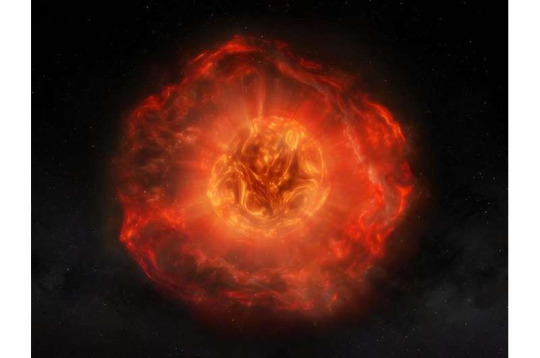#Kōichi Itagaki
Text
Supernova surpreende cientistas com perda extrema de massa
NOTÍCIA: Uma supernova surpreendente desafia a teoria da evolução estelar. SN 2023ixf perdeu uma massa solar no ano anterior à explosão. Estudo revela propriedades ópticas incomuns.
Uma nova supernova descoberta recentemente está desafiando o que os cientistas sabem sobre a morte das estrelas. A supernova, chamada SN 2023ixf, perdeu uma quantidade inesperada de massa no ano anterior à sua explosão, o que contradiz as expectativas e a teoria da evolução estelar.
SN 2023ixf é uma supernova do tipo II, que ocorre quando uma estrela vermelha supergigante colapsa sob seu próprio…

View On WordPress
#buracos negros#estrelas de nêutrons#Evolução Estelar#Kōichi Itagaki#perda extrema de massa#SN 2023ixf#Supernova#supernova tipo II#Universo
0 notes
Text

The Pinwheel Galaxy, M101 // nyda83
Less than a year ago on May 19, 2023, a supernova was detected in M101, SN 2023ixf. The supernova was found by Japanese amateur astronomer Kōichi Itagaki (b. 1947), and you can see it here in this image as the bright blue dot in the leftmost spiral arm.
This was a big deal as it was the brightest and closest supernova to Earth in the last ten years. It likely left behind a neutron star or black hole.
#astronomy#astrophotography#messier marathon#galaxy#spiral galaxy#star-forming galaxy#peculiar galaxy#pinwheel galaxy#messier#messier 101#M101#NGC 5457#Arp 26#ursa major
19 notes
·
View notes
Link
2 min read Hubble Images Galaxy with an Explosive Past A NASA Hubble Space Telescope image of the spiral galaxy NGC 941. ESA/Hubble & NASA, C. Kilpatrick This image from NASA’s Hubble Space Telescope features the spiral galaxy NGC 941, which lies about 55 million light-years from Earth. Hubble’s Advanced Camera for Surveys (ACS) collected the data that created this image. Beautiful NGC 941 is undoubtedly the main attraction in this view; however, the hazy-looking galaxy was not the motivation for collecting the data. That distinction belongs to an astronomical event that took place in the galaxy years before: the supernova SN 2005ad. The location of this faded supernova was observed as part of a study of multiple hydrogen-rich supernovae, also known as type II supernovae, to better understand the environments in which certain types of supernovae take place. While the study was conducted by professional astronomers, SN 2005ad itself owes its discovery to a distinguished amateur astronomer named Kōichi Itagaki, who has discovered over 170 supernovae. This might raise the question of how an amateur astronomer could spot something like a supernova event before professional astronomers who have access to telescopes such as Hubble. The detection of supernovae is a mixture of skill, facilities, and luck. Most astronomical events happen over time spans that dwarf human lifetimes, but supernova explosions are extraordinarily fast, appearing very suddenly and then brightening and dimming over a period of days or weeks. Another aspect is time – data from a few hours of observations with telescopes like Hubble might take weeks, months, or sometimes even years to process and analyze. Amateur astronomers can spend much more time actively observing the skies, and sometimes have extremely impressive systems of telescopes, computers, and software they can use. Because amateurs like Itagaki spot so many supernovae, there is actually an online system set up to report them (the Transient Name Server). This system is a big help to professional astronomers, because time is truly of the essence with supernovae events. After the reported discovery of SN 2005ab, professional astronomers were able to follow up with spectroscopic studies and confirm it as a type II supernova, which eventually led to Hubble to study its location. Such a study wouldn’t be possible without a rich library of cataloged supernovae, built with the keen eyes of amateur astronomers. Text credit: European Space Agency Media Contact: Claire AndreoliNASA’s Goddard Space Flight Center, Greenbelt, [email protected] Share Details Last Updated Nov 16, 2023 Editor Andrea Gianopoulos Location Goddard Space Flight Center Related Terms Astrophysics Astrophysics Division Galaxies Goddard Space Flight Center Hubble Space Telescope Missions Science & Research Science Mission Directorate Spiral Galaxies The Universe Keep Exploring Discover More Topics From NASA Hubble Space Telescope Galaxies Stories Stars Stories Exoplanets
0 notes